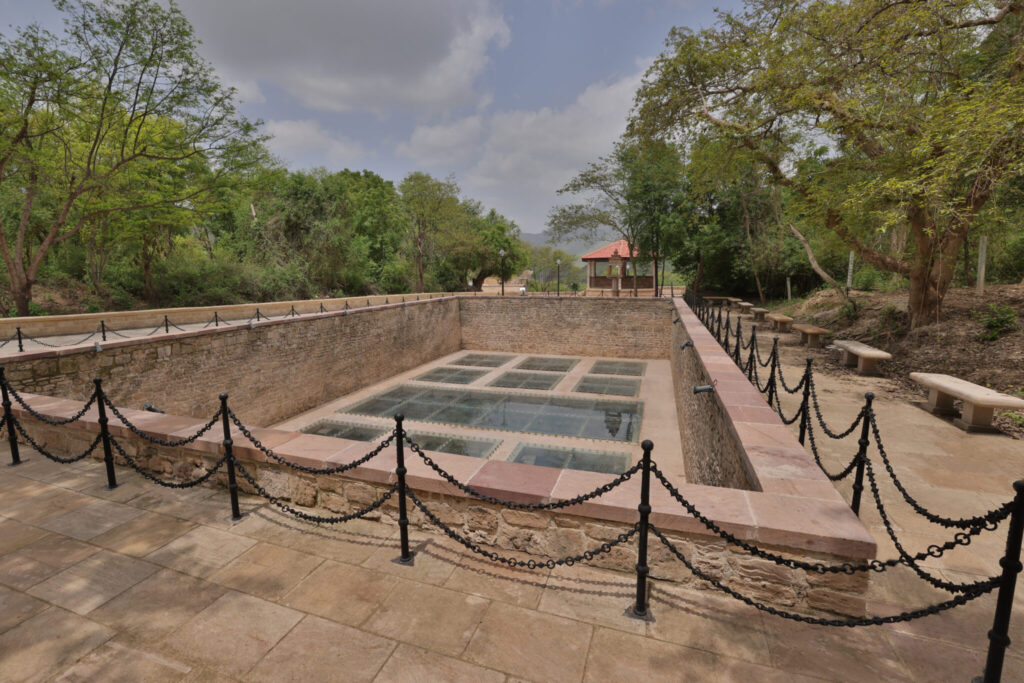Anaj Bhandar (Grain Storage) in Uparkot Fort: Echoes of Ancient Sustenance

The Anaj Bhandar, or Grain Storage, within the formidable walls of Uparkot Fort, stands as a testament to the strategic foresight of ancient civilizations. This storeroom for grains not only reflects the practicalities of sustenance within the fort but also tells a tale of self-sufficiency and resilience in times of need.

Sustaining the Fortress

The Anaj Bhandar served as a vital repository for grains, strategically positioned within Uparkot Fort to ensure a sustainable source of food during times of siege or scarcity. Its construction was a crucial element of fort planning, reflecting the importance of self-sufficiency in ancient times.
Architectural Ingenuity

The architectural design of the Anaj Bhandar revolves around functional simplicity. The storeroom’s layout prioritizes efficient storage and easy retrieval of grains, showcasing the practical aspects that were essential for maintaining a well-supplied fortress.

Granary Infrastructure

Explore the granary’s infrastructure, noting the provision for ventilation to prevent spoilage. The construction prioritized keeping the stored grains cool and dry, ensuring the longevity of the food supply. This attention to detail highlights the ancient understanding of agricultural storage principles.
Symbol of Self-Reliance

The Anaj Bhandar symbolizes the resilience of the fort’s inhabitants. In times of uncertainty, having a well-stocked granary was a testament to the fort’s ability to withstand adversities and remain self-reliant, even in the face of external challenges.

Grain Storage Legacy

The Anaj Bhandar within Uparkot Fort preserves the legacy of grain storage, embodying the ancient wisdom of fort planning. Explore this storeroom and delve into the practicalities that shaped the sustenance strategies of a bygone era, providing a unique perspective on the resilience of those who called Uparkot home.
